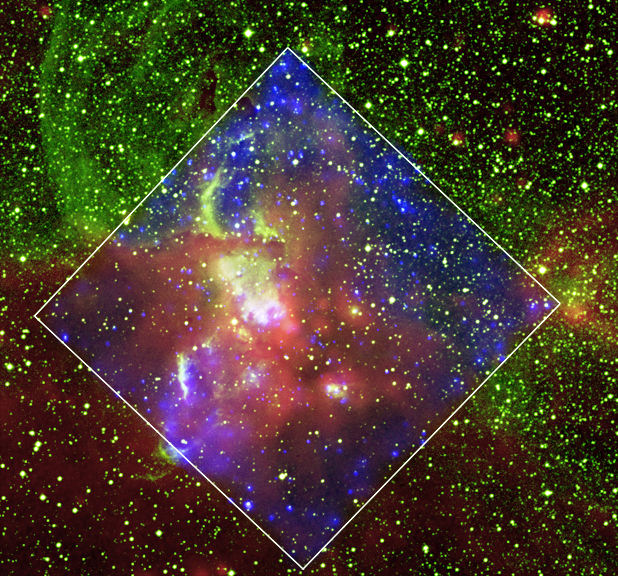
 Credit:X-ray: NASA/CXC/Penn State/L.Townsley et al.; Optical: DSS; Infrared: MSX
Credit:X-ray: NASA/CXC/Penn State/L.Townsley et al.; Optical: DSS; Infrared: MSX
Wild Hearts of the Young
Young stars stir things up. Especially young, very massive stars. Such stars blast their environments with powerful ultraviolet radiation, and strong stellar winds powered by that radiation. They make their presence known across the entire Galaxy, but they're rather shy too, hiding behind enormous clouds of gas and dust. They stay so hidden in fact, that astronomers don't really understand how these very massive stars form. But these stars produce X-ray emission, and
X-rays can pierce the veil of dust surrounding these young objects. The image above is a composite optical, infrared and X-ray image of a massive young star nursery, NGC 3576, about 9000 lightyears from earth. The X-ray image was obtained by the Chandra X-ray Observatory and is represented by the blue emission in the inner, tilted square (which represents the field of view of Chandra's X-ray camera). The X-rays show both unresolved emission from stars, along with diffuse emission surrounding the cluster probably produced by the interaction of the stellar winds with the thick dust clouds.
<
HEA Dictionary ● Archive
● Search HEAPOW
● Other Languages
● HEAPOW on Facebook
● Download all Images
● Education ● HEAD
>
Each week the HEASARC
brings you new, exciting and beautiful images from X-ray and Gamma ray
astronomy. Check back each week and be sure to check out the HEAPOW archive!
Last modified Tuesday, 27-Feb-2024 10:10:12 EST


